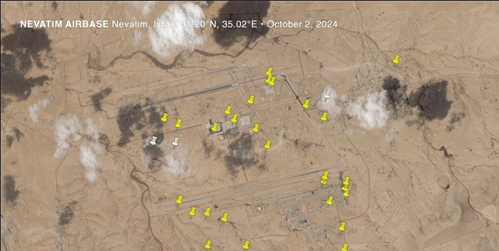
Articles
Why the Russian Ballistic Missile Strike is a Textbook Asymmetric Response to NATO Doctrine
Sub Title : Why the Russian ballistic missile strike is a textbook asymmetric response to NATO doctrine
Issues Details : Vol 18 Issue 5 Nov – Dec 2024
Author : Vikramaditya Singh
Page No. : 42
Category : Military Affairs
: December 4, 2024

“No battle plan survives first contact with the enemy,” said Colin Powell, a sentiment that resonates with Russia’s evolving military strategy in the Ukraine war, now surpassing 1,000 days instead of the mere weeks Moscow originally envisioned. As Bismarck aptly put it, “The Russians are slow to saddle up but ride fast once they do.”
On November 21, 2024, Russia launched the “Oreshnik,” a ballistic missile targeting a factory in Dnipro, eastern Ukraine. Reports conflict about the damage: Ukrainian officials claim minimal impact, while Russian sources assert total destruction of the one-square-mile Soviet-era manufacturing plant. Despite the ambiguity, the missile strike showcased six waves of kinetic energy warheads, impacting serially—a chilling demonstration of area saturation capability. This innovation raises concerns for NATO’s airbases in the Asia-Pacific and Israeli bases in the Middle East.
Comparing Ballistic Missile Strategies: Iran vs. Russia
Satellite imagery from the Nevatim Airbase in Israel highlights the inefficacy of Iran’s ballistic missile strikes. Using likely Fattah-1 missiles with 450kg warheads, the impacts caused minimal damage to critical infrastructure. The cost-benefit ratio for such weapons is justifiable only for nuclear payloads, as the destructive impact resembles a Mark 84 bomb, priced at $16,000 versus the millions spent on ballistic missiles. Iran’s demonstration was more a show of capability than practical warfare, with accuracy and cost hindering its feasibility.
In contrast, Russia’s Oreshnik demonstrates a paradigm shift. Targeting the Uzmash factory, a space rocket engine site in Dnipro, the missile released 36 Multiple Independently Targetable Reentry Vehicles (MIRVs) from over 700 kilometers away. Traveling at speeds of Mach 10 to Mach 11, these kinetic energy warheads—each weighing around 100kg—delivered devastating impact without the need for explosives. The Oreshnik’s payload capacity exceeds 4,000kg, nearly 10 times that of the Fattah-1, with the added ability to saturate a targeted area through sequential strikes.
A few more impacted Tel Nof airbase in Central Israel, and a few impacted in front of the office of their Intelligence Agency, Mossad.
The MIRV’s impacted in 6 waves of 6 strikes each, with each wave being spread over a few 100 meters.
This is a textbook asymmetric response to the threat of NATO air dominance.
Asymmetric Response to NATO’s Air Power Doctrine
MIRVs are not a novel concept—they date back to the 1960s with the U.S. Poseidon missile—but the Oreshnik signals a significant shift. NATO’s military doctrine heavily relies on air power to conduct area saturation attacks beyond 300 kilometres. Russia, along with China, traditionally prioritizes defensive air strategies to shield land operations. Achieving such saturation attacks conventionally was outside their capability, relying instead on nuclear weapons, which escalate conflicts to catastrophic levels.
NATO airbases in Europe and the Asia-Pacific have long been assessed as difficult to neutralize using conventional missile attacks. For instance, a RAND Corporation wargame suggested China would need over 100 ballistic missiles to significantly impair Japan’s Misawa Airbase, considering defensive systems and accuracy limitations. However, with a MIRV-enabled weapon like the Oreshnik, this requirement drops to just 4–5 missiles per airbase. A single missile could deplete air defense batteries, while subsequent strikes cripple operational capacity.
The implications are profound. If Oreshnik-like weapons are deployed in significant numbers, NATO airbases could face debilitating strikes, challenging their doctrine of air dominance. This would force NATO to consider alternative strategies to counterbalance the loss of air superiority, fundamentally altering the battlefield dynamics.
Strategic Implications and Future Outlook
Russia’s Dnipro strike serves as both a demonstration and a message. President Putin declared the Oreshnik test successful and ordered serial production, although current stockpiles are limited to 4–5 units. While global deployment may take years, the potential proliferation of such weapons could reshape military doctrines worldwide.
This war has seen innovation under duress, from the tactical use of drones to hypersonic missiles. The Oreshnik exemplifies the adage, “Necessity is the mother of invention.” As the Ukraine war drags on, both Russia and Ukraine have shown remarkable adaptability in leveraging emerging technologies. The Oreshnik’s introduction underscores the evolving nature of modern warfare and its unpredictable trajectory.


